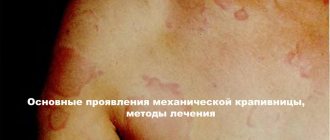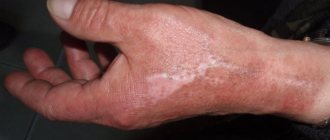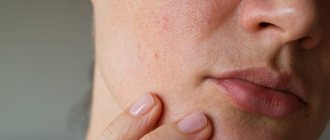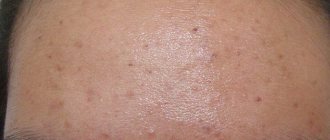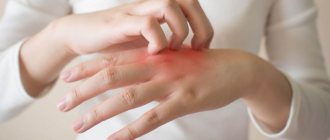Pimples on the scalp in the hair are a very common occurrence. Unfortunately, it is usually not given importance, since the rashes are hidden behind the strands. As a rule, the patient turns to a specialist only when the problem becomes widespread. However, it should be remembered that treatment in this case turns out to be much more complex and lengthy.
Why do acne appear on the head?
The causes of acne on the head may be the following:
- disruption of the sebaceous glands;
- poor nutrition;
- insufficient or improper hair or skin care, as well as the wrong choice of care products;
- hormonal disturbances or physiological changes (for example, during puberty);
- increased sweating;
- folliculitis (its development may be indicated by purulent pimples on the head);
- constant wearing of hats made of synthetic materials;
- allergic reactions;
- frequent scratching, traumatic effects;
- diseases of the nervous system;
- dysfunction of the adrenal glands;
- decreased immunity;
- autoimmune disorders;
- hereditary predisposition;
- infectious diseases;
- taking certain medications (for example, corticosteroids).
Pimples on the scalp in men are most often caused by hormonal activity, stress, exposure to chemicals (for example, during industrial work), and skin reactions after shaving. In addition, breakouts can be a result of using dull trimmer blades while trimming. Acne on the head of women sometimes appears when using oral contraceptives.
Also, among other reasons, they can signal ovarian diseases, in particular polycystic disease. That is why, if the phenomenon is recurrent, a consultation with a gynecologist may be required.
Allergic rashes on the face
A rash on the face appears in people with a hereditary predisposition to allergies. You may also develop:
- Due to chronic diseases of various types;
- With reduced immunity;
- After undergoing operations;
- If you are often in an environmentally harmful environment or work;
- In contact with animals;
- In the spring - during the flowering of plants;
- With chaotic use of medications and so on.
The main thing that the doctor should do after diagnosis is to determine the main allergen that provokes the rash and eliminate it.
Rashes on the face
If you are allergic to one or another component, a rash can appear on different parts of the body - but more often on the face. It has a different appearance and can be expressed as:
- blisters;
- Dots;
- Nodules;
- Spots.
The appearance of the rash directly depends on the allergen. Based on the appearance and contacts of the patient, the entire rash can be classified into:
- Medicinal - the main provocateur is medication - rash - small spots that gradually occupy an increasing area of the skin;
- Seasonal rhinitis - due to pollen, poplar fluff - red, pronounced spots;
- Allergic dermatitis - most often an occupational type, associated with the environment and contact with stainless metal alloys - in the form of purulent blisters;
- Urticaria - different etiology - red, swollen spots;
- Atopic eczema - has a hereditary nature, in the form of clearly defined spots, often on the skin around the lips and so on.
There are many such varieties, and a doctor will be able to determine the exact allergen and cause of the disease after a thorough diagnosis.
Small rash on the face
Allergic rashes on the face can be on any part of the skin and look like small red dots. A small rash on the face can be not only an allergic reaction, it has different causes:
- Hormonal imbalances;
- Stomach diseases;
- Nervous disorders;
- Improper skin care and so on.
Therefore, it is impossible to independently determine why you have red rashes - laboratory and clinical studies are needed, that is, professional diagnostics. If urticaria is diagnosed (namely, it has a pinpoint arrangement of small spots), then the doctor will prescribe appropriate treatment, taking into account:
- Patient physiology;
- His age;
- Heredity;
- Degree of development of the disease;
- Chronic diseases and so on.
Treatment of minor allergic rashes is a long process that includes a whole range of medical measures.
Rash on the face and neck
Such rashes can also have different causes, ranging from improper hygiene of the neck area to diseases of the internal organs.
It is simply necessary to visit a doctor with such symptoms, because a rash on the face and neck may indicate the onset of serious diseases:
- Corey;
- Rubella;
- Typhus;
- Scarlet fever;
- Meningococcemia.
Rash on the face of an adult
Rashes in adults are more often associated with a number of factors:
- Poor nutrition;
- Bad habits;
- Stress;
- Hormonal changes in the body;
- The onset of serious diseases of internal organs, for example, diabetes;
- The development of a chronic disease of any organ.
Then it’s worth getting examined in a clinic and identifying the disease before it becomes chronic. As you know, all diseases are best treated in the initial stages; later they become incurable and can even lead to death. Therefore, a rash on the face of an adult is a reason to undergo an examination and find out everything about the state of your health.
Treatment of acne on the head
The course of therapy depends on the causes of the problem, however, as a rule, it includes:
- antimicrobials;
- enterosorbents;
- retinoids;
- means that dry out rashes.
In addition, clinical procedures such as mesotherapy, laser treatment, biocomplex, and plasma therapy are effective in this case.
When the rash spreads severely, it is sometimes necessary to take antibacterial drugs, as well as drugs to correct hormonal levels. To prevent the recurrence of acne on the scalp, the patient is advised to choose the right hygiene products, normalize nutrition, monitor the hormonal status of the body, take precautions when interacting with chemicals, take vitamins and microelements, and give up bad habits.
Allergies on the face and neck
If it is confirmed that it was allergies on the face and neck that caused the redness and rashes, the allergen will be identified. More often such rashes are provoked by:
- Food;
- Seasonal flowering of plants, pollen;
- Cosmetics for face and neck care;
- Contaminated air;
- Medicines, etc.
Allergy on the chin
If, after diagnosis, the doctor determines that your redness is an allergy on the chin, and not another type of disease, then the allergen will be identified and appropriate therapy will be prescribed. But often a small red rash on the chin indicates hormonal changes in the body. Therefore, such rashes occur:
- In adolescents - during the formation of the hormonal system;
- In adults after 45 years, when restructuring of the body also begins and hormonal levels change.
Then it will be enough to take a blood test for hormones, and the doctor will determine the true cause of the spots on the face.
Allergic acne on forehead
When red spots appear on the forehead, doctors can diagnose:
- Diseases of the small intestine - in the central part of the forehead;
- Adrenal glands - near the eyebrows;
- Rectum - on the left side of the forehead;
- Large intestine - at the top, near the hair;
- Bladder - at the temples;
- Endocrine and hormonal systems - small rash in any area of the forehead;
- The nervous system is a large red spot.
If allergic acne on the forehead is determined after examination, then the treatment regimen is the same:
- Identification of the main allergen;
- Its elimination;
- Prescription of the treatment complex.
You don’t have to wonder why you have a rash on your face, you just need to come to the Allergomed clinic, where they will definitely help you get rid of them.
Rash classification
If we talk about rashes in men, the role of primary morphological elements is performed by those appearing on the skin:
- spots;
- Nodules;
- Bubbles,
- Pustules;
- Tubercles.
As for secondary elements, we are talking about:
- Secondary dyschromia;
- Cracks;
- Scales;
- Ulcers;
- Excoriation;
- Erosion and so on.
The classification of exanthems that can appear in men can be varied. For example, the size of the rash is:
- Small – when it does not reach 2 millimeters;
- Medium – reaches 5 millimeters;
- Large - more than 5 millimeters.
The shape of the rash in men can be either regular or irregular. And according to the homogeneity of the rash there are:
- Monomorphic - when elements belong to a single type and have the same dimensions.
- Polymorphic - when the rashes may vary.
Depending on how the elements are localized, the rash can be:
- Symmetrical;
- Asymmetrical.
According to the amount of exanthema rash, they can be:
- Single (about 10 exanthems);
- Not abundant;
- Abundant.
As for the timing of occurrence, the rash occurs:
- Early – already on the first day of the disease.
- Average – approximately on the 4th day of illness.
- Later – when 5 days of illness have passed.
Even the background of the skin during rashes can be different:
- Pale;
- Hyperemic.
Common symptoms and manipulations in dermatology:
- Skin rashes
- Calling a dermatologist to your home
- Itching in the urethra
- Itchy skin
- Skin rash
- Prevention of casual sex
- Skin neoplasms
- Pyoderma
- Pityriasis rosea
- Streptoderma
- Scabies
- Peeling skin
- Fungal infections
- Skin infection
- Pus on the skin
- Blisters on the skin
- Papillomas on the foreskin
- Sexually transmitted diseases
- Skin structure
Severity of acne and duration of treatment in adolescents
Acne on a teenager's face can look different - small red rashes, pustules, blockages, blackheads, painful nodes. Acne on the back of a teenager is one of the signs of the severity of acne. And the remedy for acne (for teenagers) is selected depending on this degree of severity of the process. The duration of treatment depends on how severe the acne is and whether the doctor’s prescriptions are strictly followed.
Treatment may take 3 months, or maybe a year. Typically, teenagers are not burdened with multi-level home care and procedures, but it is still necessary to do the minimum for results. In any case, already in the first or second month the skin becomes clearer, this is very encouraging for both parents and children.
And at the same time relaxing. It is important not to interrupt this path halfway, as everything will quickly return to its roots, and perhaps twice as much effort will be required the second time.
Onset of acne in adolescents and provocative diets
Acne in teenage girls often begins during the onset of the menstrual cycle, at 12-14 years of age. But it happens that black spots, greasiness, dense large blockages in the T-zone can be observed long before this, from 7-8 years. In general, this age in dermatology is considered the beginning of teenage acne. This earlier onset is now associated with “Western” nutrition.
Video - Moms about teenage acne
To mothers about teenage acne. Acne in teenagers. Pediatric dermatologist
Children's diets increasingly include foods with a high glycemic index (fast food, snacks, rolls, sweets, carbonated drinks, cocktails, etc.) and a colossal amount of dairy products (including sweets). All this is a provocation of increased work of the sebaceous glands, the early appearance of acne and significantly aggravates the course of acne.
Acne in a teenage boy may also first appear before the age of 10, but more often at 12-13 years of age. Pimples and blackheads of a teenager are something that can and should be dealt with. Practice shows that you can enjoy clean and well-groomed skin even at 15 years old.
The appearance of stains
For diagnosis, the primary elements turn out to be quite important, since the nosology of dermatoses is determined by their nature. The same spots can be vascular, pigmented and even artificial. There are several reasons for their occurrence:
- Hypopigmentation;
- Hyperpigmentation – when melanin accumulates;
- Anomaly of vascular skin development (such as capillary hemangioma).
- Temporary process of capillary expansion.
The size of the spots can reach 5 centimeters, and the diameter can be even larger. They can also be different in type: for example, roseola reaches 1 centimeter in diameter. Hyperemic spots may disappear during diascopy. Hemorrhagic spots form when red blood cells extend beyond the boundaries of the vascular systems. Petechiae are the same hemorrhagic spots, but with a small diameter. Ecchymoses are large hemorrhagic formations.
Finally, tattoos are artificial stains, when insoluble dyes are deposited in the skin.
Nodules, which are another primary element of a skin rash, can change the color of the skin and its overall consistency, and when they disappear, there is no scar left behind.
Methods for diagnosing skin diseases:
- Diagnosis of skin diseases
- Diagnosis of skin diseases at home
- Diagnosis of allergic skin diseases
- Diagnosis of bacterial skin diseases
- Diagnosis of viral skin diseases
- Diagnosis of hair diseases
- Diagnosis of nail diseases
- Diagnosis of skin tumors
- Skin scraping
- Blisters on the skin
- Dermatoscopy
- Demodex tests
- Diagnosis of sexually transmitted infections
- Mushroom tests
- Skin scraping
